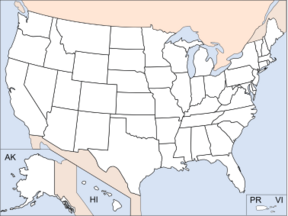Great Sand Dunes National Park And Preserve
 From Conservapedia
From Conservapedia | Great Sand Dunes National Park and Preserve | |
|---|---|
| IUCN Category II (National Park) | |
 | |
| Location | Colorado |
| Nearest city | Alamosa, CO |
| Area[1] | 84,189 acres (340.7 km²) {84,145 acres (340.5 km²) federal} |
| Established | 1932 (Monument) September 13, 2004 (Park) |
| Visitors[2] | 285,121 (in 2007) |
| Governing body | U.S. National Park Service |
| Website | NPS - Great Sand Dunes |
Although we don't know the names or languages of those earliest people, modern American Indian tribes were familiar with the area when Spaniards first arrived about 400 years ago. The traditional Ute word for the Great Sand Dunes is Sowapophe-uvehe, "the land that moves back and forth." Jicarilla Apaches settled in northern New Mexico and called the Dunes Sei-anyedi, "it goes up and down." Blanca Peak, just southeast of the Dunes, is one of the four sacred mountains of the Navajo. What was—and is—the connection for these people? For the Jicarilla Apache and Southern Ute tribes, it is primarily a practical matter: their ancestors camped and hunted in the San Luis Valley. While they were at the Dunes, they collected the inner layers of bark from ponderosa pine trees, useful to them as food and medicine. For the people from the Tewa/Tiwa-speaking pueblos along the Rio Grande, it is a spiritual link. They remember a traditional site of great importance located in the San Luis Valley near the Dunes: the lake through which their people emerged into the present world.
| |||||||||
References[edit]
- ↑ NPS Listing of Acreage 9/30/2008
- ↑ NPS Reports -> Ranking Report -> 2007
↧ Download as ZWI file | Last modified: 02/06/2023 10:12:45 | 11 views
☰ Source: https://www.conservapedia.com/Great_Sand_Dunes_National_Park_and_Preserve | License: CC BY-SA 3.0
 ZWI signed:
ZWI signed:
 KSF
KSF